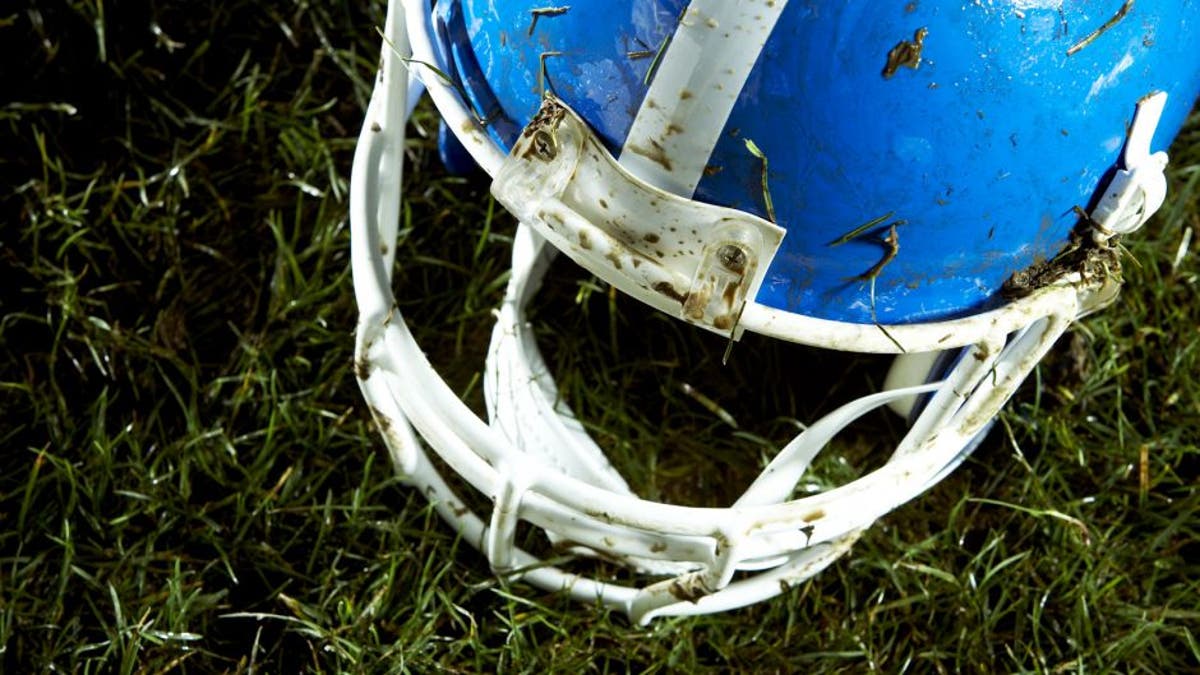
Football helmet on grass
A few key policy changes can reduce sudden deaths during middle school and high school sports activities, according to a best practices statement in the Journal of Athletic training.
More than 90 percent of sudden deaths in sport are due to sudden cardiac arrest, exertional heat stroke, head injuries and exertional sickling, the dangerous decrease in blood flow that can occur in athletes who carry the sickle cell trait, the authors write.
Evidence based safety policies like heat acclimatization, sickle cell trait testing, the "Heads Up Football" program and requiring that automated external defibrillators (AEDs) be available can reduce the risk of all four events.
"These efforts are really starting to pay off," said Dr. Barry P. Boden, a sports medicine specialist at The Orthopaedic Center in Rockville, Maryland, who was not part of the new statement.
"A lot of them are really just education, not much more than that," Boden told Reuters Health by phone. "It still takes some time and effort but there's really no excuse."
Heat acclimatization policies mandate that in the hottest months of the year, athletes only gradually return to sports practices and exertion. The Korey Stringer Institute recommends no more than one practice per day in the first five days and no more than three hours of practice per day, with athletes wearing only a helmet, if appropriate, and no other extra equipment on day one and two of practice. All protective equipment can be worn and full contact can begin on day six.
In the second week of practice, two-a-day sessions should alternate with one-a-day sessions. For two-a-day practices, the two sessions should be separated by at least three hours in a cool environment.
The National Collegiate Athletic Association implemented heat acclimatization guidelines like these in 2003, and since then heatstroke-related deaths have dropped from one or two deaths each August before the policy to only one August death since 2003.
The policy saved an estimated 20 lives among college football players, the authors write.
"Heat acclimatization costs absolutely no money," said coauthor Douglas J. Casa, CEO of the Korey Stringer Institute at the University of Connecticut in Storrs.
Since 2011, 15 states have adopted similar guidelines for high school athletes. But 35 states still do not have these guidelines, Casa told Reuters Health by phone.
"Most states make the changes after they have a tragedy," he said.
"There's a lot of kickback from coaches because it requires a change in tradition," Casa said.
Between 2000 and 2010, 10 Division I collegiate nontraumatic football deaths were in athletes with the sickle cell trait. After 2010, when the NCAA required all institutions to offer sickle cell trait screening or documentation of prior screening, there was only one death attributed to sickle cell trait.
Sudden cardiac arrest, which causes most sudden deaths in youth sports, is largely survivable through immediate recognition, early cardiopulmonary resuscitation and access to an AED, preferably within one minute of collapse, the authors say.
Every sport venue should have easy access to an AED, they write.
"Nothing has had a greater influence than AED policies," Casa said. One AED costs about $1,000 and can last 10 years, but it must be placed within easy reach of sports venues, so schools may need more than one device, he said.
USA football launched "Heads Up Football" in 2012, which addresses tackling and blocking techniques, equipment fitting, and reducing player contact during practice. The program has reduced all injuries, including concussions.
But only Oregon requires Heads Up Football at the high school level. Another 11 states endorse the program.
"A policy change that can dramatically improve the safety for youth and high school athletes is to have a certified athletic trainer, if they don't have one," said Erik E. Swartz of the University of New Hampshire in Durham, who was not part of the new paper.
Many states require that a trainer be present at certain events, but not necessarily all athletic events, Swartz told Reuters Health by phone.
"Having somebody there who is trained to recognize and respond when those things happen is the most effective policy change that an organization can make," he said.
While college level sports can all be regulated by one governing body, the NCAA, policies for public high schools vary by state, and smaller venue sports club and camps can be even harder to standardize, as they have many governing bodies and may be broken down by sport, Casa said.
